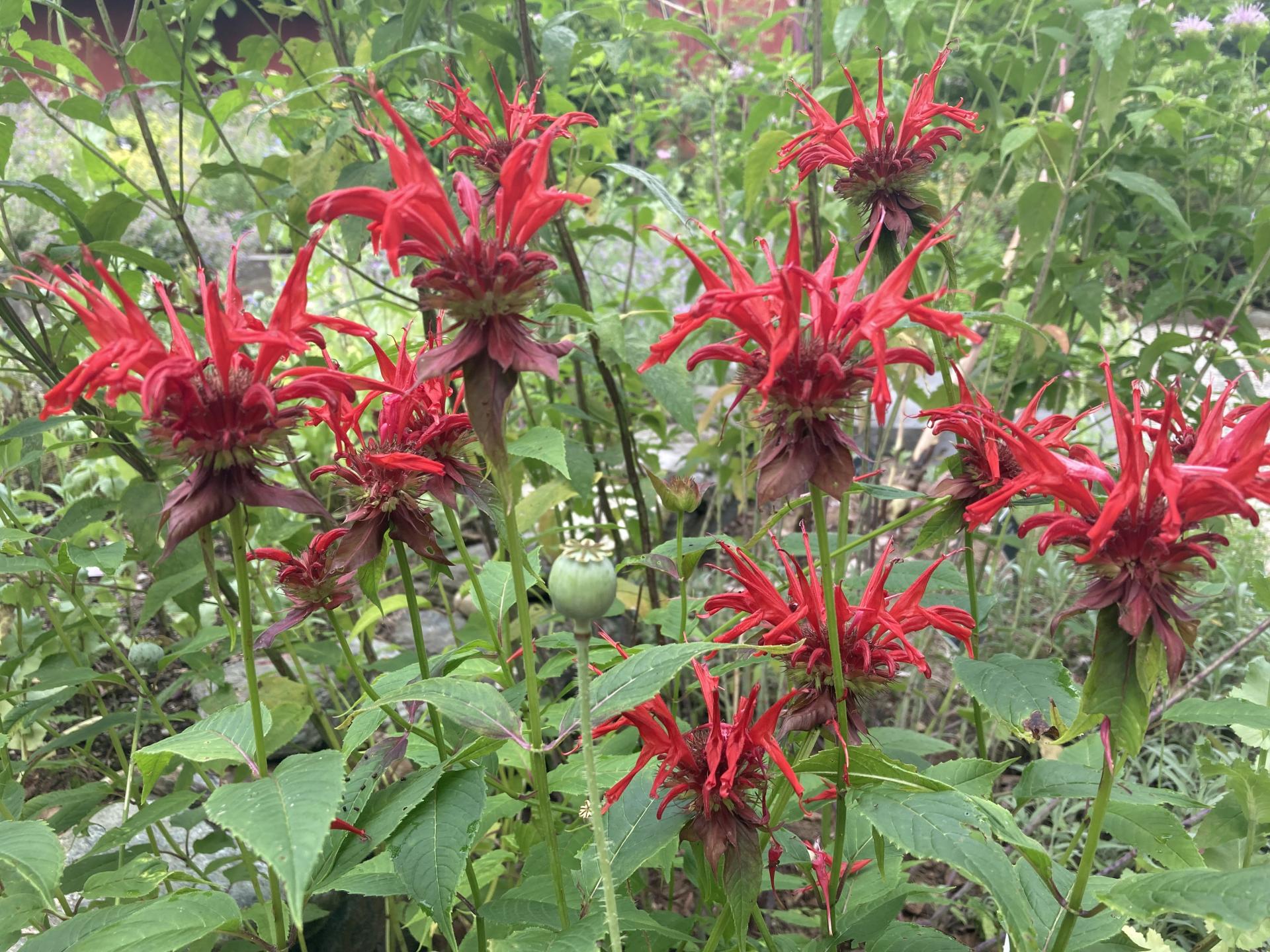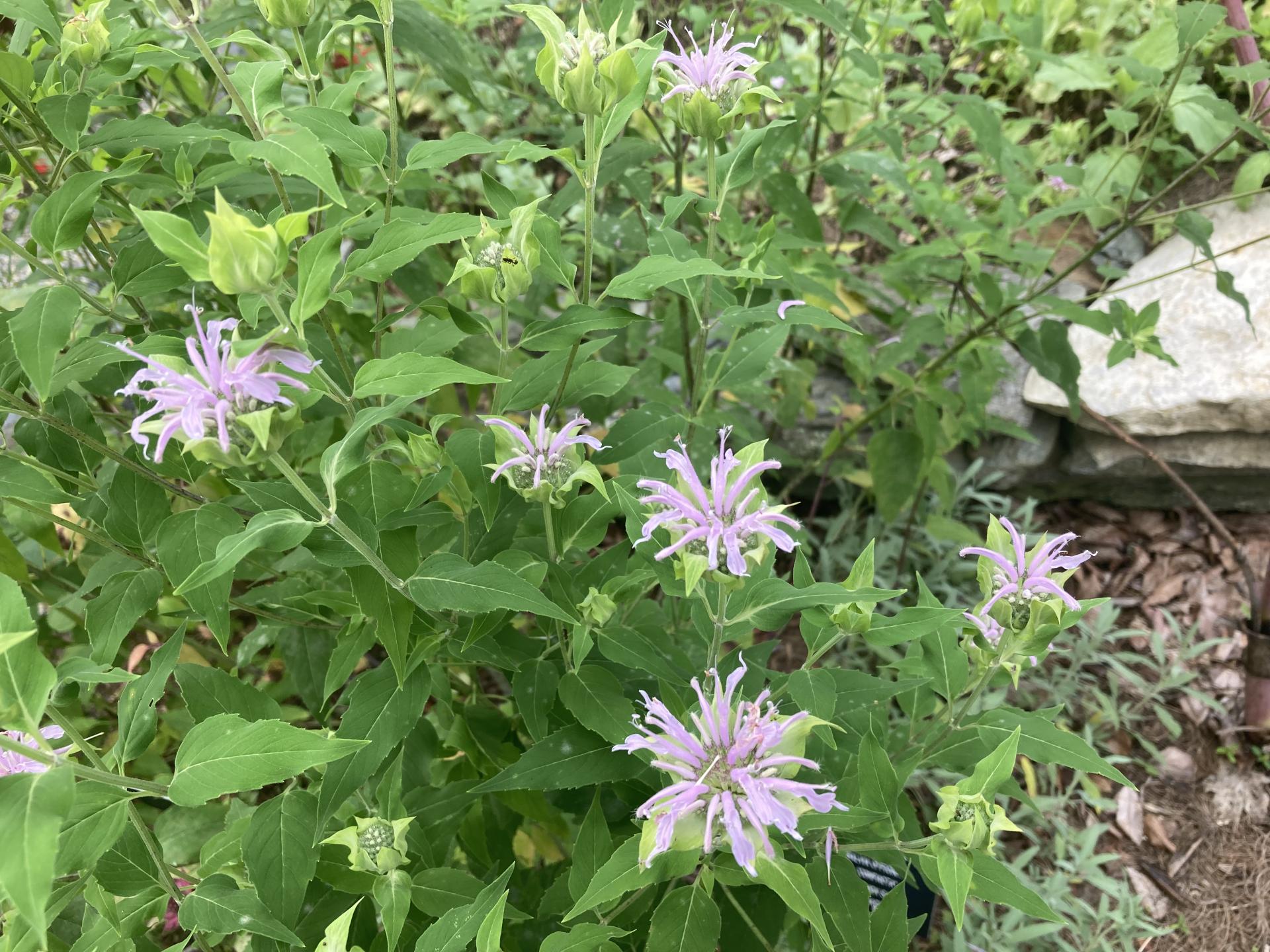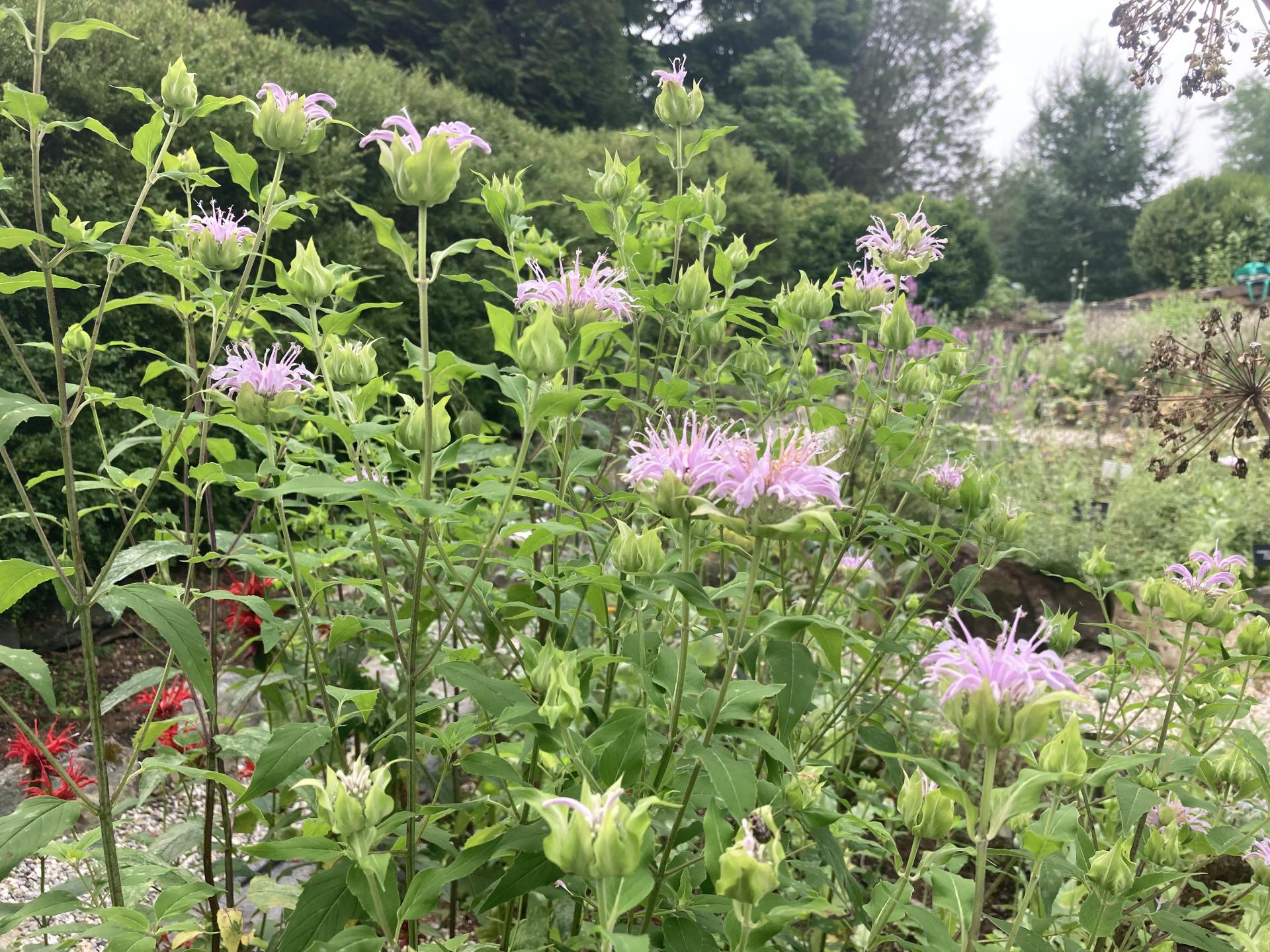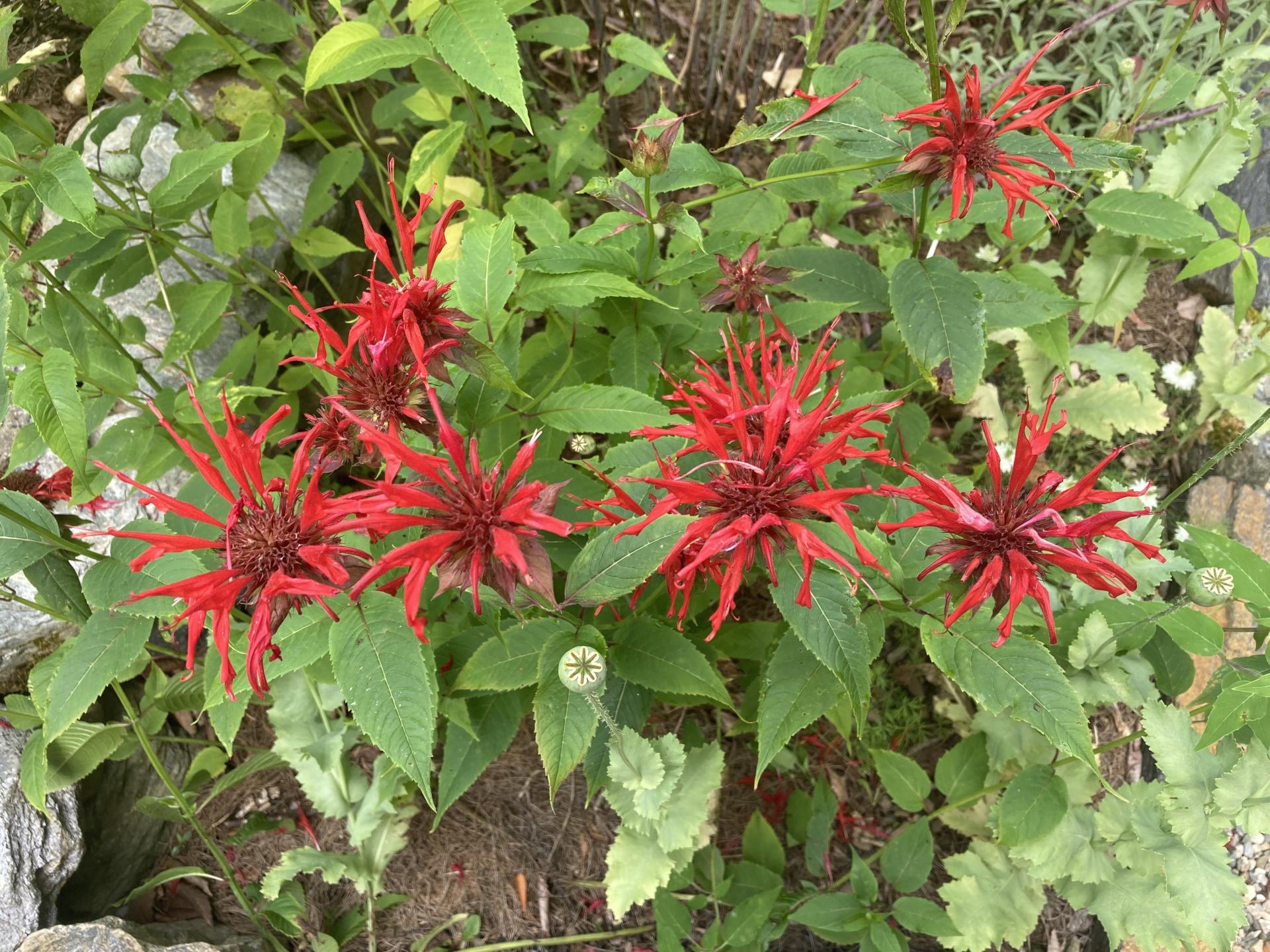You are here
What's Happening in the BBG Herb Gardens and Kitchen This Week?
What's Happening in the BBG Herb Gardens and Kitchen This Week?
By Barbara Smith
News from the Kitchen: Many Yummy Products
At the height of the summer season, this week the Herb Associates Kitchen Team produced many delicious treats utilizing a variety of herbs. Adding to our “shrub” line are two new flavors: strawberry and blackberry. Both are delicious, and the strawberry is exceptional. These flavorful beverage enhancers are perfect additions for summer drinks. In a similar vein, two fresh simple syrups were prepared — one, flavored with spearmint, the other with blue basil. For the salad lovers, the Team made two customer favorites: Tomato Basil Dressing and Raspberry Vinaigrette. A new Garlic Scapes Vinegar was bottled, fragrant with garlic. Opal Basil Jelly was prepared. The Team is readying a new line of teas; Kitchen Team Leader Theresa Terry reports that “we are drying chamomile, mint, lemon verbena, and lavender to be ready in a few weeks.” Look for these products in the BBG Gift Shop. All proceeds support the Garden.
Herb of the Week: Monarda
Monarda is a native American herb in the mint family named after Spanish physician and botanist Nicholas Monardes. (For a note on how that happened, see below.) Twelve species offer a wide assortment of flavors and fragrances; many are hardy to Zone 4. They thrive in full sun or partial shade, depending on the species. All species attract hummingbirds and bees and are good honey plants.
Two of the most widely grown species are M. didyma and M. fistulosa. Examples of these varieties may be seen blooming currently in the Herb Display Gardens (near the Center House). Either variety is commonly known as bergamot or beebalm (as their leaves rubbed on bee or wasp stings provide relief).
M. didyma has shaggy heads of tubular flowers ranging in color from ivory through pink, red and violet purple, that bloom at the top of the plant’s stem which may be 3-4 feet tall. Native Americans brewed beebalm tea to drink, and early settlers began brewing it during the period of the Boston Tea Party as an alternative to black tea. Later, the Shakers who settled near Oswego, N.Y., brought notoriety to tea made from M. didyma, which became known as Oswego tea or Oswego beebalm. Many Native Americans as well as the Shakers utilized the tea as a remedy for fevers and colds, skin conditions, and urinary tract infections, among other ailments.
M. fistulosa or wild monarda have pale lavender flowers like M. didyma and a fragrance similar to a bergamot orange, an Italian orange/lemon hybrid.
Generally speaking, monarda cultivars with red flowers tend to have a tea-like aroma and flavor. Leaves and flowers can be used for sweet dishes, in syrups, or baked in scones and tea breads. These red-flowered varieties prefer growing in shade and deep, humus soil. The more common thyme and oregano scented types can be used as substitutes for those herbs, and generally their blooms are shades of purple, pink and white. The hybrids that have light or lavender floral color prefer well drained gravelly soil in full sun.
Several species are prone to powdery mildew, which can be reduced by removing diseased leaves. If you’re planning to add these striking flowers to your garden, be sure to choose a mildew-resistant variety, such as ‘Raspberry Wine’ (pictured), Rose Quen’, or ‘Rosy Purple.’
Naming of Monarda — How did it come to pass that a herb native to America was named for a Spanish physician and botanist? Two European botanists had a hand in this result. The first, Nicholas Monardes of Seville, was writing in the heyday of Spanish seafaring travels to the “new world” — the mid 1500s. Spanish ships brought back examples of plants and seeds, among which was the herb later known as Monarda. Although Monardes himself never traveled to the new world, he studied the plants he grew from seeds and their medicinal properties, writing about those examples in a book “Joyfull Newes out of the Newe Founde Worlde”, published in 1569, which contained information about the herb in discussion. About 200 years later, Swedish botanist Carl Linnaeus developed a system for classifying and naming living organisms, and he eventually named the particular herb discussed here in honor of Dr. Monardes.
The Berkshire Botanical Garden’s Herb Associates began in 1957 and have been making and selling products for the benefit of BBG ever since. At BBG, the Herb Associates oversee a display garden and production garden, both located near the Center House. Members/volunteers meet every Tuesday morning during the late spring through mid-autumn each year, coinciding when the gardens themselves are open to the public. Members plant, weed and tend the gardens, as well as harvest and process the variety of herbs.
Help Our Garden Grow!
Your donation helps us to educate and inspire visitors of all ages on the art and science of gardening and the preservation of our environment.
All Donations are 100 percent tax deductible.









